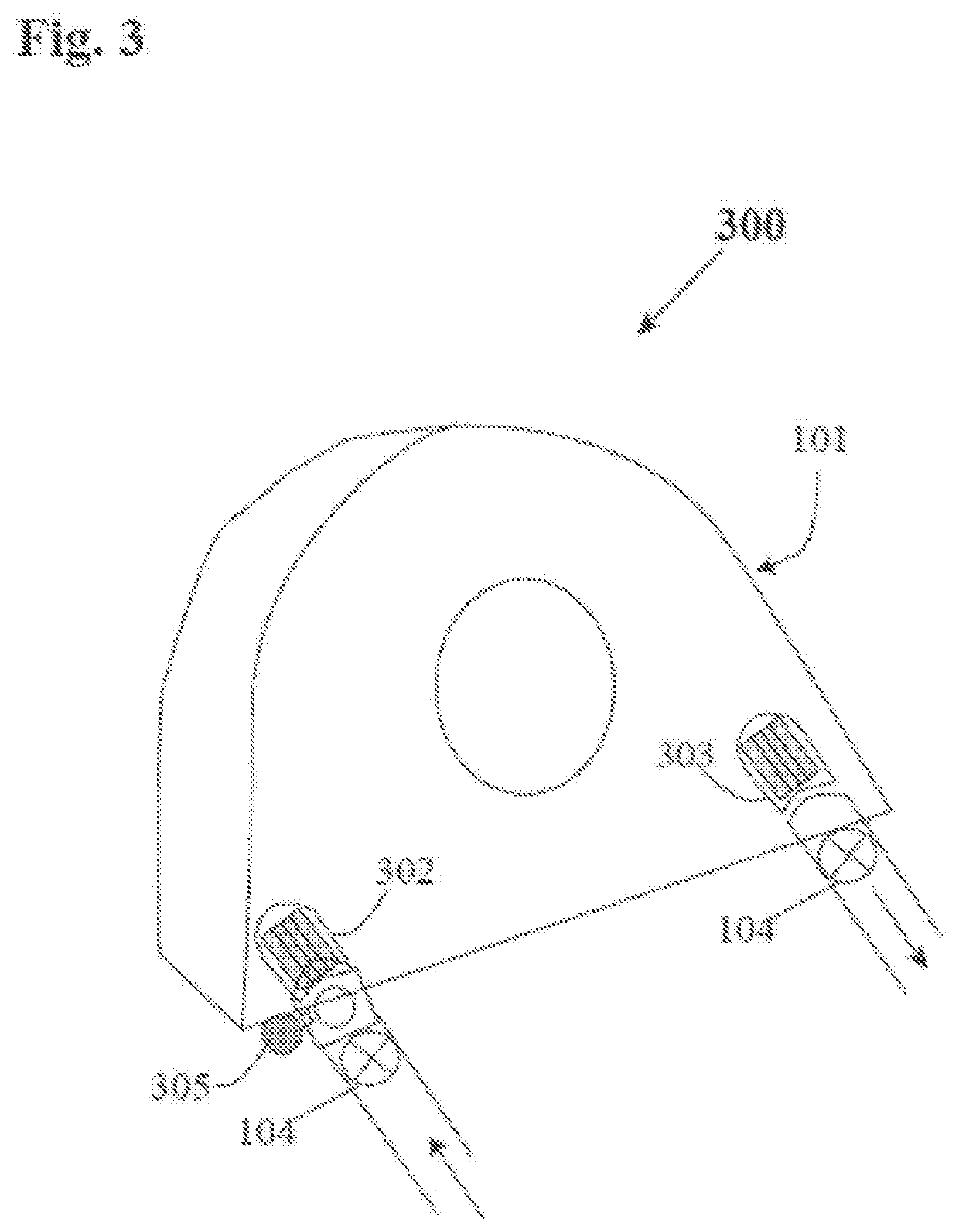Mist generator for sterilizing forced air systems
a forced air system and generator technology, applied in the direction of gaseous substances, other medical devices, disassembly and maintenance, etc., can solve the problems of puddles of leaked water around the patient and on the operating room floor, heavy water filled blankets, and high patient discomfort, so as to improve sterility
- Summary
- Abstract
- Description
- Claims
- Application Information
AI Technical Summary
Benefits of technology
Problems solved by technology
Method used
Image
Examples
Embodiment Construction
[0054]The objective of the invention is to provide a mist generator for delivering an antimicrobial or disinfectant mist to a blower and / or blower system in order to sterilize the blower and / or blower system and decrease the possibility of exposure to infecting microbes. The mist generator is simple, inexpensive, easy to use and install, and essentially disposable. The subject mist generator is intended to perform internal sterilization of the blower and / or blower system, including the blower, blower vents, internal blower components, air vents, and hoses. The present invention relates to improvements in the sterility of forced air systems employing forced air, heated air and / or cooled air, including, for non-limiting example, hospital machines / health care equipment, portable oxygen generators / commercial and / or residential forced air systems for facilitating and / or maintaining internal sterility. Hospital machines / health care equipment contemplated include respirators, anesthesia ma...
PUM
| Property | Measurement | Unit |
|---|---|---|
| pH | aaaaa | aaaaa |
| pore size | aaaaa | aaaaa |
| diameter | aaaaa | aaaaa |
Abstract
Description
Claims
Application Information
 Login to View More
Login to View More - R&D
- Intellectual Property
- Life Sciences
- Materials
- Tech Scout
- Unparalleled Data Quality
- Higher Quality Content
- 60% Fewer Hallucinations
Browse by: Latest US Patents, China's latest patents, Technical Efficacy Thesaurus, Application Domain, Technology Topic, Popular Technical Reports.
© 2025 PatSnap. All rights reserved.Legal|Privacy policy|Modern Slavery Act Transparency Statement|Sitemap|About US| Contact US: help@patsnap.com



